Usually if we talk about Göbekli Tepe then we talk about monumental buildings, iconic T-shaped pillars or sophisticated pieces of art. Only rarely do other so-called small finds, for example chipped stones, personal adornments, animal bones, etc., take centre stage. However, these small finds reveal a lot about daily life activities at Göbekli Tepe. For example animal bones tell us much about the diet, personal adornments are indicative of style and chipped stones, well what do they actually tell us about the site? Before we can answer this simple question, it is helpful to talk about chipped stones in general. Chipped stone is a term used to describe knapped (e.g. worked) flint or obsidian (as well as other types like chert etc., but they play no role at Göbekli Tepe). I don’t want to go into too much detail about the formation of flints or obsidians but the following is important: flint and obsidian are raw materials with very high concentrations of SiO2 (silicon dioxide; Hauptmann 1980). SiO2 is still one of humankind’s most favourite chemical compounds, as for example many windows or glasses we use are mainly made of SiO2. Now you may already know why flint and obsidian were so important back then, because materials with high concentrations of SiO2 tend to break into sharp-edged pieces. Nowadays, of course, we try to avoid broken and sharp-edged glasses or windows, as they can only be seen as a mess, but during Palaeolithic and Neolithic times (and also later on) flint and obsidian were deliberately turned into broken and sharp-edged pieces, or in other words chipped stones. These artefacts were suitable for most daily life tasks, for example cutting meat or cereals, carving figurines, producing beads or other personal adornments, arming shafts with arrowheads and so on. As you can see, chipped stones are versatile. However, the knapping process, e.g. the actions that turn blunt stones into razor sharp artefacts, is not something that can be done easily, but requires a lot of skill that can only be acquired through learning and years of experience. However, since we can no longer interview the past flint and obsidian knappers about their techniques and way of understanding chipped stones, we will focus on our view as chipped stone specialists. For the sake of simplicity; we will talk about the two most important concepts in the analysis of chipped stone: technology and typology (Inizan et al. 1999; Shea 2013).
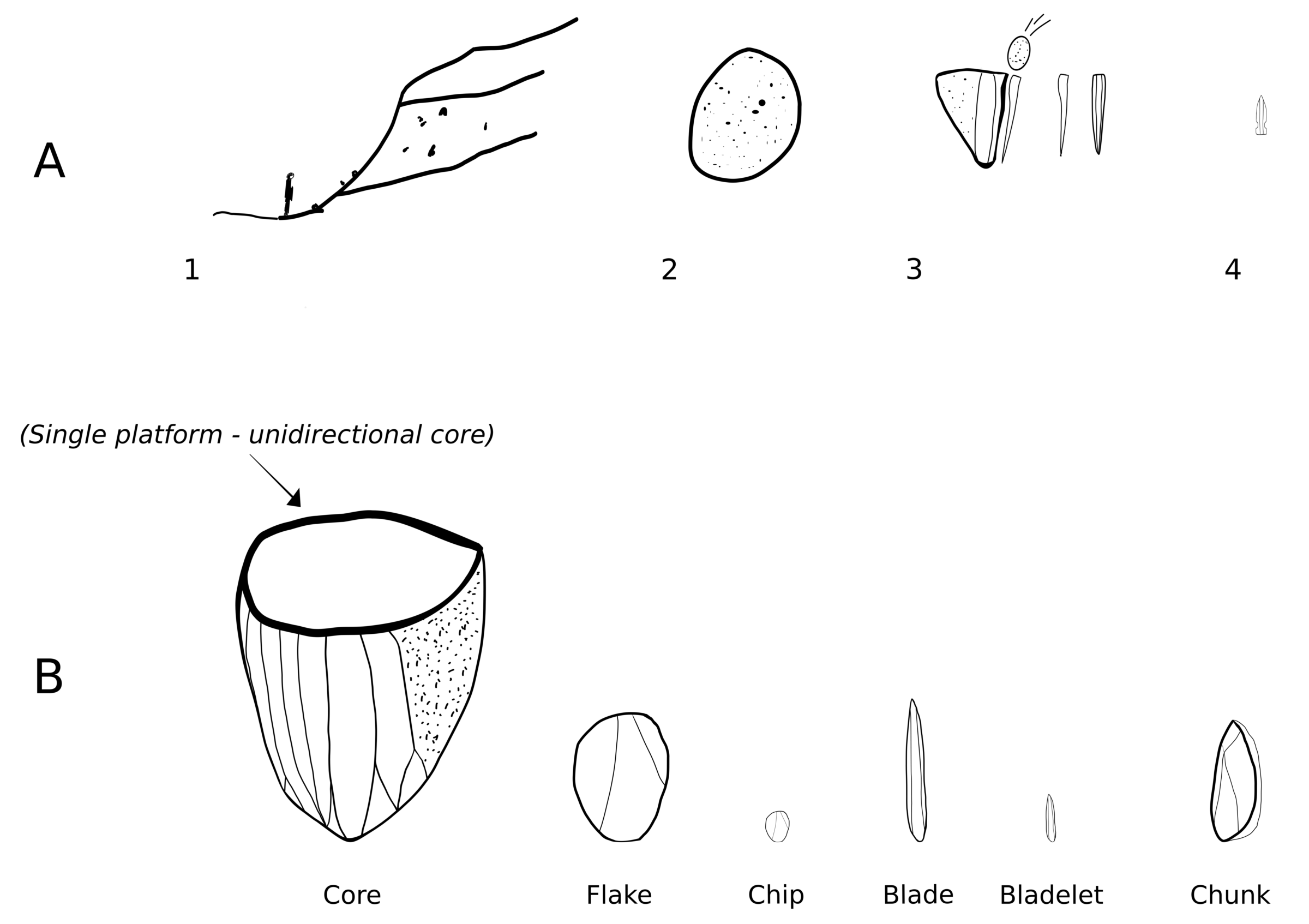
Technology basically describes the way blunt stones are transformed into razor sharp artefacts. A concept tied to technology that is commonly used is called chaîne opératoire (best translated as workflow) and if you want to read more about chipped stone technology you will often encouter this term. However, for the sake of simplicity we will not dive much into the basic ideas behind the concept of chaîne opératoire and instead we will focus on the general actions and processes involved in producing chipped stones (see also figure 1, A): Blunt stones – also called nodules – are collected or mined (1). Then the nodule is formed into a core (2). A core is the starting point for the production of so-called blanks (3) and blanks can be made into tools (4). It is important to know that there are different core-types, blank types and tool types. In the case of cores the platform and the number of platforms is very important. If cores have only one platform they are called unidirectional cores (from time to time also called unipolar, monopolar, single platform core). In other cases, cores have two platforms and are then called bidirectional cores (sometimes also called bipolar or double platform core). Moreover, there are also cores with multiple platforms. To make a blank, one must either hit the outermost edge of the platform with a stone (hard punch) or an antler (soft punch) or has to apply pressure, for example with a stick. The blanks can then be divided into different types, which are called flakes, chips, blades, bladelets and chunks (see also figure 1, B). This subdivision is based on the shape for example a flake has no predetermined shape whereas a blade has a predetermined shape (minimum 1:1 but usually at least 1:2 width-length ratio and more or less parallel ridges). Chips and bladelets are small versions of flakes and blades and chunks are bulky pieces that don’t fit into any of the other categories. From a technological point of view, the production of blanks ends here, but they can be further modified into so-called tools, leading us to the second area of interest for a chipped stones specialist: typology e.g. the shape and style of artefacts. Typology does not only refer to tools, yet it can be most easily explained in terms of them (Inizan et al 1999; Shea 2013). But first: what is a tool?
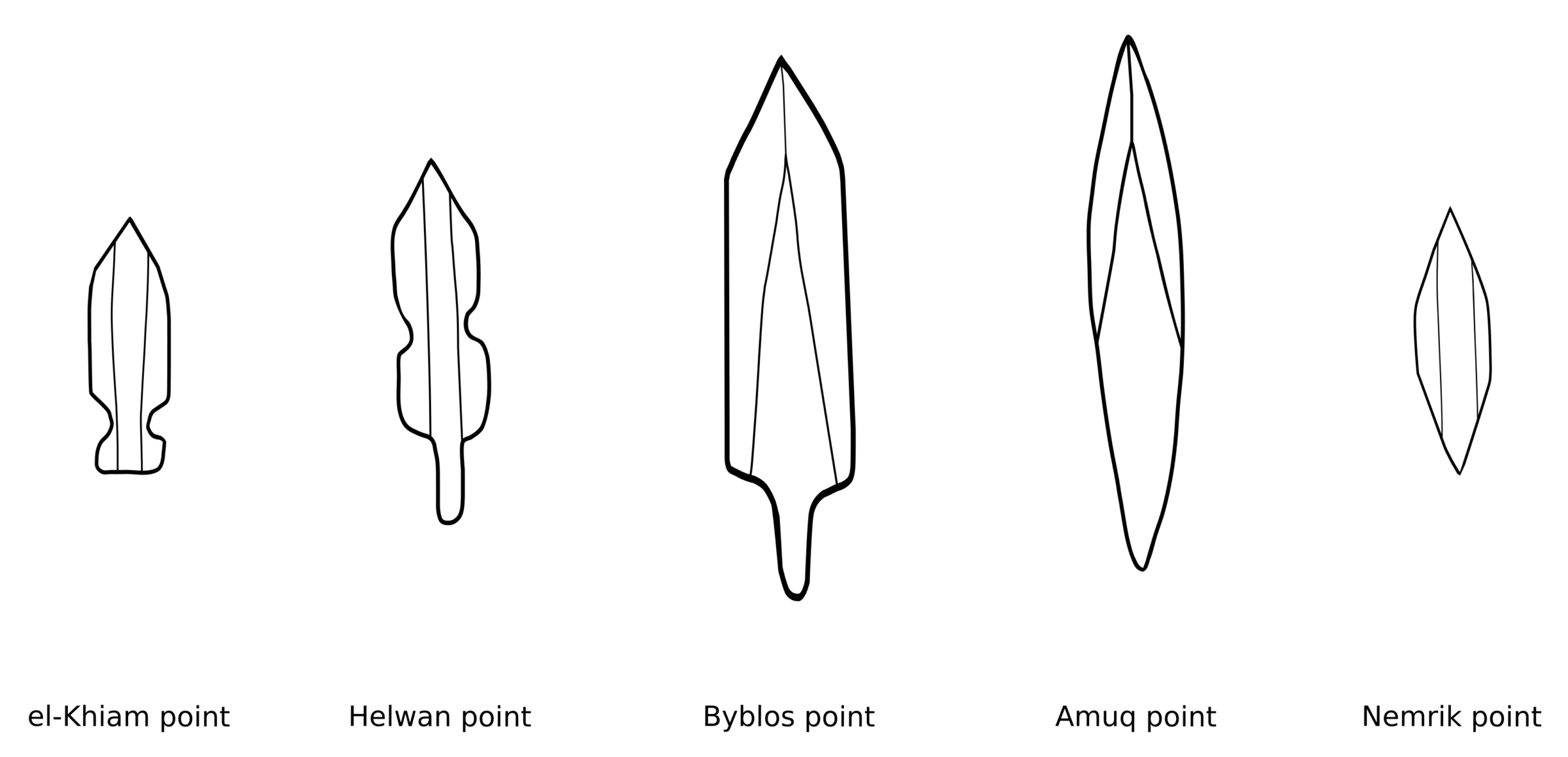
A tool is a blank with further modifications that alter the shape not only for functional reasons but also for fashion reasons. For example, arrowheads (also called points) are made in a way that enhances hafting and improves penetration into the game. However, the function does not entirely determine the shape. The shape can vary and this allows for personal style or on a larger scale for group identity. In addition, different shapes can also be related to time period. Arrowheads are a good example of this, as it is possible to observe certain differing styles over time (see figure 2). For example, el-Khiam points date to the PPNA and Amuq points to the PPNB. As you can already see, chipped stones are not just broken stones with sharp edges, there is a lot of technology and craftsmanship behind them (Inizan et al. 1999; Shea 2013). But what can we learn from this?
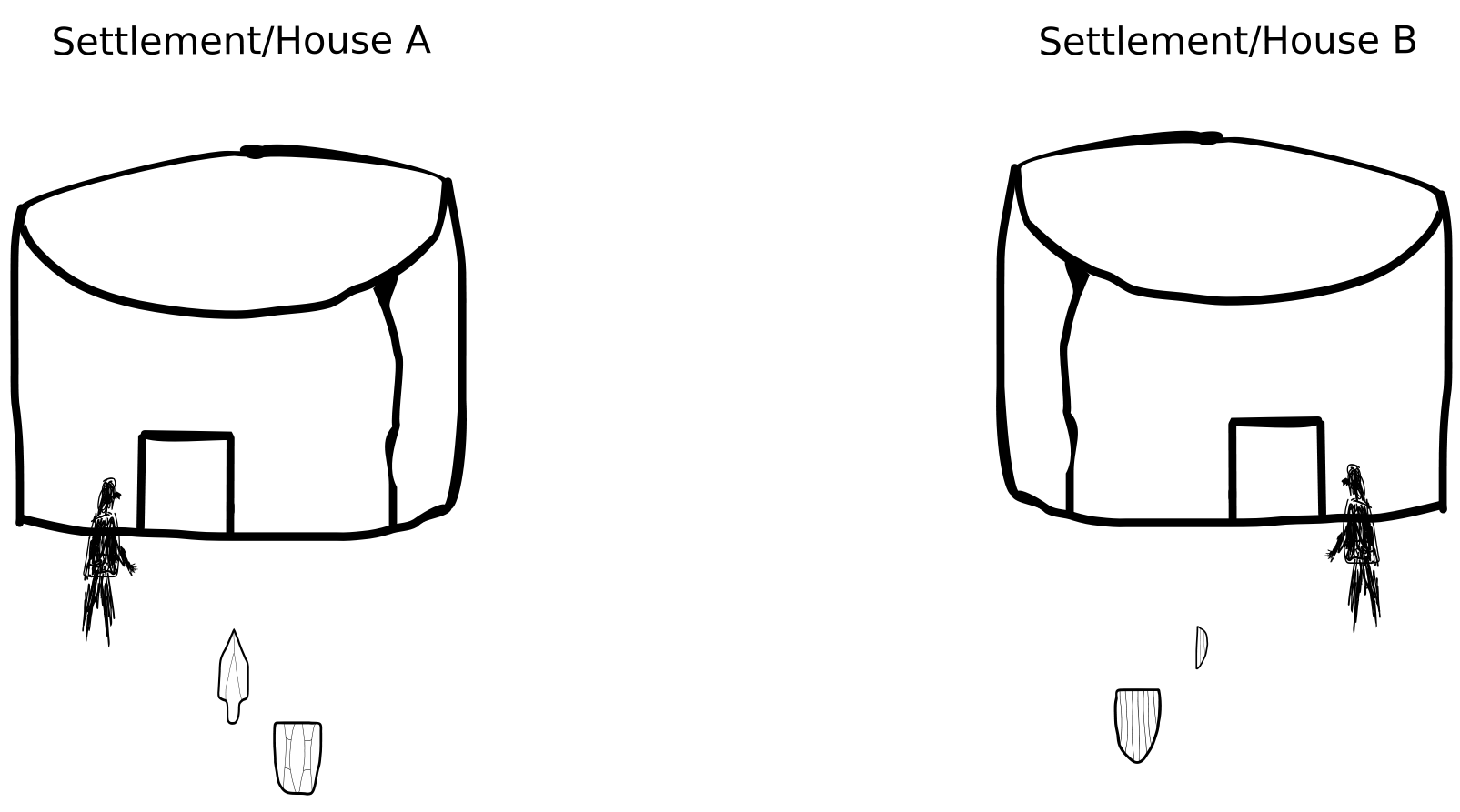
Sometimes it is possible to observe certain patterns, for example people from region A only use technology A and tools A, while people from the neighbouring region B only use technology B and tools B (see figure 3). In this exemplary case technology and typology serve as good examples to distinguishing between both regions. The reasons behind such borders are always tricky to interpret but a simple reason could be that these people tried to avoid each other which over time led to completely different chipped stone traditions. A similar, albeit not directly comparable, situation can be observed during the Pre-Pottery Neolithic in Southwest Asia. Somewhere around the Khabur River, a clear techno-typological cut can be identified, which led archaeologists to separate a west- and east-wing (Kozłowski 1999; Kozłowski and Aurenche 2005). Besides regional scale studies, it is also possible to explore small-scale or intra-site variability. If, for example, in a settlement site in house A only unidirectional cores and perforators have been found whereas in house B only bidirectional cores and arrowheads are present, then it can be assumed that the people from the two houses/households either had different technological backgrounds or performed different tasks. Based on this it can also be assumed that a division of labour took place, e.g. the people from house A made beads and therefore needed perforators to drill holes and those from house B were hunters and made arrowheads. Other social questions can also be answered by chipped stones, for example if people from one house owned more blanks or tools than others, theories like social inequality can be stressed. There are many more interesting aspects to explore about technology, typology and the people but this is out of scope for this blog post. Now we turn to Göbekli Tepe. What can chipped stones tell us about the site? At the beginning it was clear that people knapped on site and produced a wide array of tools (Beile-Bohn et al. 1998; Schmidt 2000). Nevertheless, chipped stones never played a prominent role in understanding and interpreting the site. So far, it was always assumed that Göbekli Tepe was a highly specialised site without signs of domestic activities where people most likely met as part of cultic activities (Dietrich et al. 2017; Schmidt 2006). Over the past six years intensive research on chipped stones was carried out (and still is) and these studies shed new light on daily life activities at Göbekli Tepe. We were able to confirm earlier findings and furthermore specify more precisely that on-site knapping took place and that the chipped stone technology and typology was part of the west-wing chipped stone tradition from the earliest phase onwards. Moreover we found out that many assemblages excavated so far suffer from mixing problems due to so-called taphonomic processes. Especially this is problematic, as assemblages which do not belong to the same period have been mixed, which basically renders them useless, as no meaningful information about technology and typology can be obtained. However, also unmixed albeit being very rare assemblages have been analysed for the first time and they clearly speak for domestic activities. In particular chipped stone based comparisons with others PPN sites like Dja’de, Jerf el-Ahmar or Mureybet, which have been interpreted as settlements, revealed that they are no different from Göbekli Tepe. On the basis of these new insights, there is no reason to assume that Göbekli Tepe is a highly specialised site without signs of domestic activities (Breuers 2022; Breuers and Kinzel 2022). When comparing chipped stone study results with other recent studies and finds it becomes even clearer that domestic activities took place on site (Clare 2020). All in all, Göbekli Tepe has to be re-interpreted and is best explained as a settlement site with a (strong) ritual component. Turning back to the original topic of the post “How can chipped stones help understand Göbekli Tepe?” it is now clear that chipped stones can contribute a lot to the understanding of (not only) the site of Göbekli Tepe.
References
Beile-Bohn, M., C. Gerber, M. Morsch and K. Schmidt 1998. Neolithische Forschungen in Obermesopotamien. Gürcütepe und Göbekli Tepe. Istanbuler Mitteilungen 48: 5-78.
Breuers, J. 2022. Diachrone Studien zur Lithik des Göbekli Tepe: Locus 166, Raum 16 und die Sedimentsäule aus Gebäude D. Köln: https://kups.ub.uni-koeln.de/62530/
Breuers, J. and M. Kinzel 2022. “[…] but it is not clear at all where all the […] debris had been taken from […]”: Chipped Stone Artefacts, Architecture and Site Formation Processes at Göbekli Tepe. In: Y. Nishiaki, O. Maeda and M. Arimura (Eds.). Tracking the Neolithic in the Near East. Lithic Perspectives on Its Origins, Development and Dispersals: 469–486. Leiden: Sidestone Press.
Clare, L. 2020. Göbekli Tepe, Turkey. A brief summary of research at a new World Heritage Site (2015-2019). E-Forschungsbericht des DAI 2020. doi:10.34780/efb.v0i2.1012
Dietrich, O., J. Notroff and K. Schmidt 2017. Feasting, Social Complexity, and the Emergence of the Early Neolithic of Upper Mesopotamia: A View from Göbekli Tepe. In: R. J. Chacon and R. G. Mendoza (Eds.) Feast, Famine or Fighting? Multiple Pathways to Social Complexity. First Edition, Studies in Human Ecology and Adaption 8: 91-132. Cham: Springer International Publishing.
Hauptmann, A. 1980. Feuerstein, Hornstein, Flint, Chert, Silex – eine Begrifssbestimmung. In: G. Weisgerber, R. Slotta, and J. Weiner (Eds.). 5000 Jahre Feuersteinbergbau. Die Suche nach dem Stahl der Steinzeit: 7-11. Bochum: Deutsches Bergbau-Museum.
Inizan, M.-L., M. Reduron-Ballinger, H. Roche and J. Tixier 1999. Technology and Terminology of Knapped Stone (Tome 5). Nanterre: Cercle de Recherches et d’Etudes Préhistoriques.
Kozłowski, S.K. 1999. The Eastern Wing of the Fertile Crescent: Late prehistory of Greater Mesopotamian lithic industries (British Archaeological Reports International Series 760). Oxford: Archaeopress.
Kozłowski, S.K. and O. Aurenche 2005. Territories, Boundaries and Cultures in the Neolithic Near East (British Archaeological Reports International Series 1362). Oxford: Archaeopress.
Schmidt, K. 2000. Göbekli Tepe, southeastern Turkey: A preliminary report on the 1995-1999 excavations. Paléorient 26(1): 45-54.
Schmidt, K. 2006. Sie bauten die ersten Tempel. Das rätselhafte Heiligtum am Göbekli Tepe. München: C.H. Beck.
Shea, J. J. 2013. Stone tools in the Paleolithic and Neolithic near East: a guide. Cambridge: Cambridge University Press.
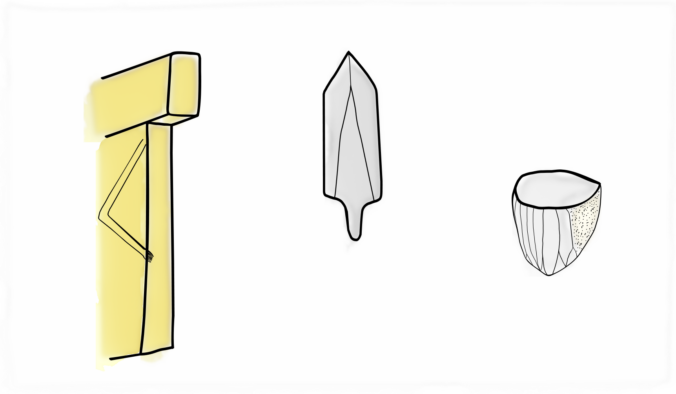
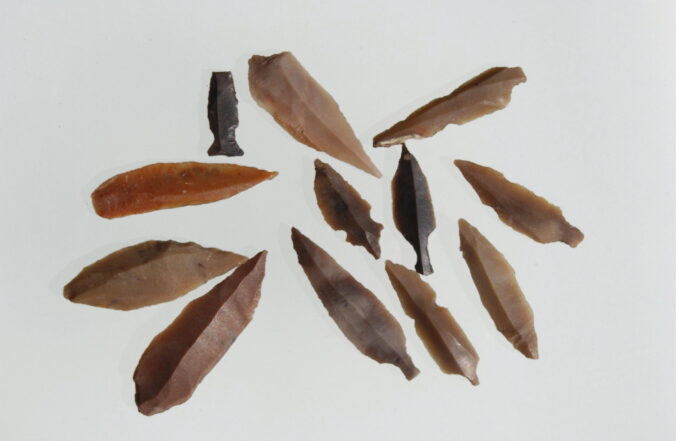
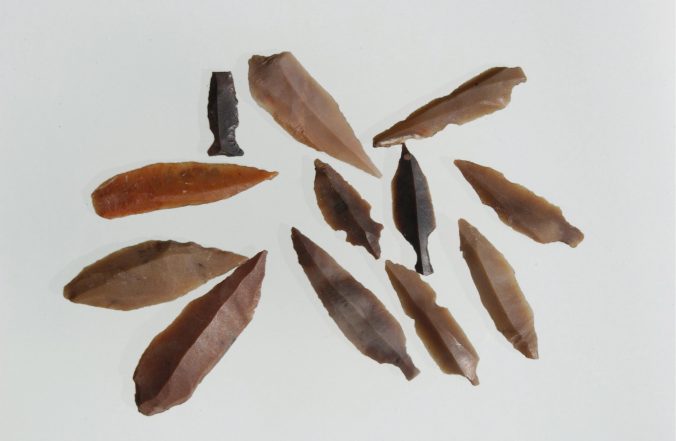

Recent Comments